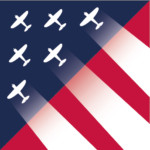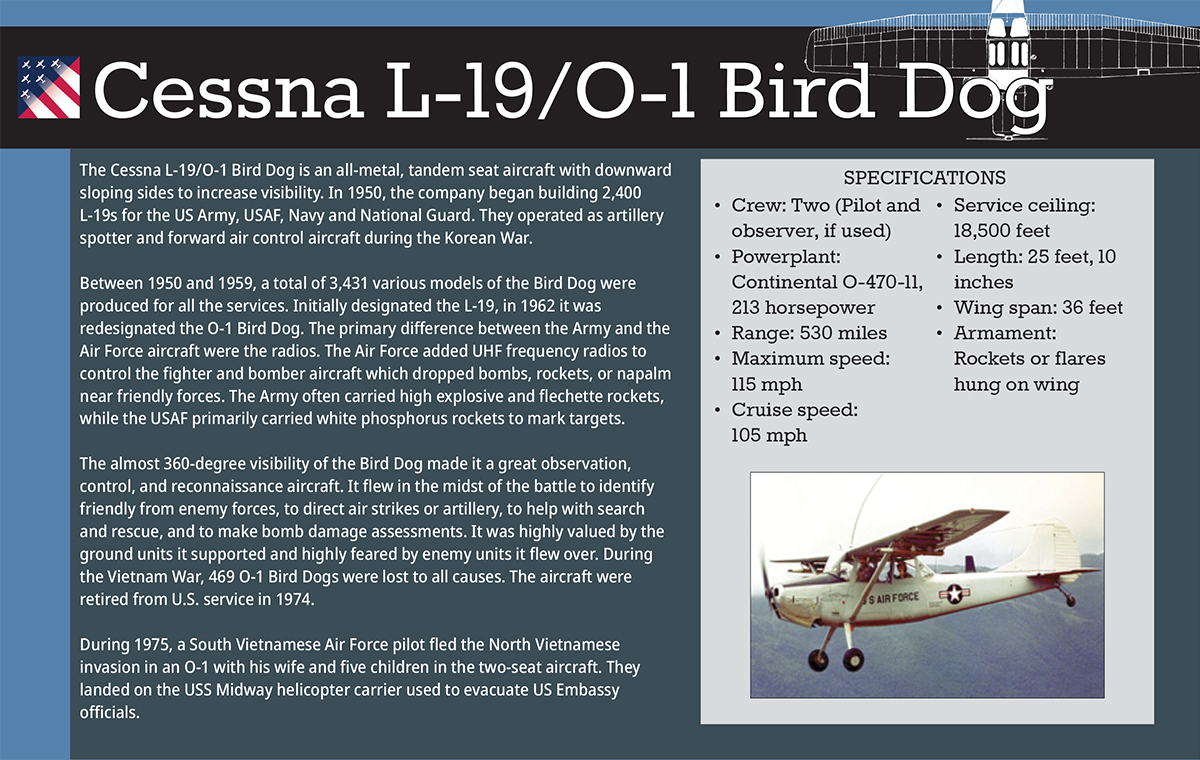The Cessna L-19/O-1 Bird Dog is an all-metal, tandem seat aircraft with downward sloping sides to increase visibility. In 1950, the company began building 2,400 L-19s for the US Army, USAF, Navy and National Guard. They operated as artillery mspotter and forward air control aircraft during the Korean War.
Between 1950 and 1959, a total of 3,431 various models of the Bird Dog were produced for all the services. Initially designated the L-19, in 1962 it was redesignated the O-1 Bird Dog. The primary difference between the Army and the Air Force aircraft were the radios. The Air Force added UHF frequency radios to control the fighter and bomber aircraft which dropped bombs, rockets, or napalm near friendly forces. The Army often carried high explosive and flechette rockets, while the USAF primarily carried white phosphorus rockets to mark targets.
The almost 360-degree visibility of the Bird Dog made it a great observation, control, and reconnaissance aircraft. It flew in the midst of the battle to identify friendly from enemy forces, to direct air strikes or artillery, to help with search and rescue, and to make bomb damage assessments. It was highly valued by the ground units it supported and highly feared by enemy units it flew over. During the Vietnam War, 469 O-1 Bird Dogs were lost to all causes. The aircraft were retired from U.S. service in 1974.
During 1975, a South Vietnamese Air Force pilot fled the North Vietnamese invasion in an O-1 with his wife and five children in the two-seat aircraft. They landed on the USS Midway helicopter carrier used to evacuate US Embassy officials.


